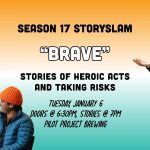Rock
Great Lakes Myth Society
“Girlfriends are leaving/new girls arrive/you open the circle/to be blinded by light.” This lyric from “Heydays,” the opening track to Compass Rose Bouquet, the sophomore offering from Michigan “northern rock” music “collective” Great Lakes Myth Society, perfectly summarizes the thesis being defended throughout – melancholy is meaningless unless it’s tempered by good spirits in the heart and in hand. When guitarist Timothy Monger sings “Uncertain the future/nostalgic the past/unable to recognize/moments that last,” there’s more sun in his voice than rain. That springtime disposition carries into all aspects, from production to songwriting. The tunes crackle with energy and spark, from the cavernous drums to the silvery trumpets on the psychedelic-via-”Crimson-and-Clover” tune “Raindrops and Roses.” The band isn’t afraid to explore the myriad folk influences available to their collective, either; “Queen of the Barley Fool” and “Debutante” incorporate Irish pub choruses without slipping into affectation. “Debutante” even throws indie-rock distortion into the guitars, giving the up-tempo jig some teeth. They accompany accordion-driven waltz “The Gales of 1838,” which closes the record with a slow, six-minute build that sways like the bow of a wind-blown pirate ship complete with refrains proclaiming that we’ll have “wine, wine, wine, more wine tonight.” This is Americana anyone can get behind. Great Lakes Myth Society takes the folk-infused sound with which we’ve all become intimately familiar and polish it with a pop sheen, producing earthy, heartfelt waltzes and jigs that manage to be introspective and fun at the same time. Pass the Jameson; who wouldn’t drink to that?
Jun 1st, 2007 by DJ HostettlerJune 2007
June 5th The Aggrolites Reggae Hit L.A. Hellcat/Epitaph Belly The Revolution CP Marilyn Manson Eat Me, Drink Me Nothing/Interscope Paul McCartney Memory Almost Full Hear Music/Concord O.A.R. Life From Madison Square Garden Atlantic Rihanna Good Girl Gone Bad Def Jam Bruce Springsteen Bruce Springsteen With the Seeger Sessions Band Live in Dublin Columbia Swizz Beatz One Man Band Universal Motown Tiger Army Music From Regions Beyond Hellcat/Epitaph Various Artists We All Love Ella: Celebrating the First Lady Of Song Verve June 12th John Doe A Year in the Wilderness Yep Roc The Mission, U.K. God is a Bullet Cooking Vinyl Sinéad O’Connor Theology Koch Mark Olson The Salvation Blues HackTone Queens of the Stone Age Era Vulgaris Interscope Mark Ronson Version RCA June 19th The Chemical Brothers We Are the Night Astralwerks Maps We Can Create Mute The Mooney Suzuki Have Mercy Elixia The Polyphonic Spree The Fragile Army TVT Two Gallants The Scenery of Farewell Saddle Creek The Unseen Internal Salvation Hellcat/Epitpah Matt White Do You Believe Geffen The White Stripes Icky Thump Third Man/Warner June 26th Ryan Adams Easy Tiger Lost Highway The Automatic, Automatic Not Accepted Anywhere Columbia Bad Brains Build a Nation Megaforce Beastie Boys The Mix-Up Capitol Marc Broussard S.O.S.: Save Our Soul Vanguard The Click Five Modern Minds and Pastimes Lava/Atlantic Editors An End Has a Start Kitchenware Nick Lowe At My Age Yep Roc Meat Puppets Rise to Your Knees Anodyne M.I.A. Kala Interscope Mya Liberation Motown Steve Vai Sound Theories Vols. 1 & 2 Epic
Jun 1st, 2007 by Erin WolfColin Hay, May 3 @ The Miramar Theatre
By Erin Landry Dropping in at Bay View’s local watering hole, the Palomino, you might have had the pleasure to be served a drink by Colin Hay’s opening act Thursday night: the talented Davey von Bohlen (of Cap’n Jazz, Promise Ring and Vermont fame), a regal name he says that was given to him at birth, which after the first few songs you realize is in direct contrast to his humble disposition. Starting off a set with “songs that preamble” by his own admission, he covered material from his “younger days” as well as songs recorded by his current band, Maritime. His voice warbles then cracks at one point, he misses notes, he stops then starts when he forgets lyrics, he laughs and chides himself, all of which just add to the spontaneous feel of his music. The imperfections and mistakes, instead of being distracting, conveyed the creative process and created an intimate performance. It was less of a concert, more of an impromptu experimental venture, music in its most raw form. And, though no explanation was necessary, after a youthful chirp from his two-year-old at the back of the crowd, he confesses that instead of practicing before the show, he “slacked off” and took his son to the children’s museum. How can you not forgive that? During intermission, the ladies room titters with rumors that Colin Hay’s live performances include his wife who does interpretive dance. Back inside the theatre, the lights dim and a rousing backstage introduction, which sets the tone for the rest of the night, describes Colin as a multi-platinum performer who “believes football is played with a round ball, enjoys sunsets, walks on the beach, and ladies, if you’re wondering, he’s a cancer.” Let’s get this right out of the way; Colin Hay is so much more than a blip on the ‘80s pop icon MTV screen (Men at Work). Since that time he has assembled an enviable body of work that has been touted through television via “Scrubs” and film via the indie hit “Garden State.” He is an artist that withstands the changing times, providing a new body of work of evocative and bittersweet songs and contemplations on life. In any case, the night’s performance is less pop concert more all-inclusive variety show (in the best possible sense) with song, poetry, comedy, storytelling and, true to rumor, an array of vocals, kazoo playing and interpretive dance by his gorgeous wife, Cecilia. The first hour was a sprinkling of newer songs overshadowed mostly by Mr. Hay talking about youth, life lessons and other musings including an admission that, while he recently wrote a song about the infamous Bob Dylan (his opening song: What Would Bob Do?), he’s never actually met the man in person. But instead of working on an album or song with Dylan, he says how he’d prefer to work on a car together, talk about alternators and transmissions…or maybe walk around a Costco in search for toilet paper, all the while […]
May 7th, 2007 by Vital ArchivesAqualung, May 3 @ The Pabst
Photo by CJ Foeckler/Pabst Theater It’s difficult to write a music review these days without drawing an inevitable comparison to a predecessor or contemporary. The case in evidence: Matt Hales’ Aqualung, which took the stage Thursday night as part of the Milwaukee Pabst Theater’s fairly priced series of talented but mostly underground and underrated national acts. What’s important about mentioning this last part has to due with some intimacy issues in the venue, which will come up again later. Matt Hales appears to be in his early 20s, which is probably important in light of the recent new flood of Britpop artists who have given us boatloads of sensitive rock in the past few years. If we follow a family tree, then Blur begat Verve and Suede, who begat Oasis and Radiohead, who begat Coldplay and Travis, which gave us (and drawing the wannabe label) Aqualung…and Keane, James Blunt, Snow Patrol, the Feeling, and…well, just insert your own VH1 You Oughta Know find – where Hales got his first American-side break. But the 35-year-old piano rock singer/songwriter is a bit older than most on the tree, and did not find success until landing a successful tune for the new Volkswagen Beetle in 2002. It’s hard to quantify a sound when in the middle of it. When synthpop was at its height, did music fans say, “Oh, that Erasure. They’re just a Depeche Mode wannabe.” At the time, there was room for everybody. Shouldn’t it be fair to just claim Aqualung as an overall part of a new movement deeply entrenched in mood and angst? Hales does not make it easy. To sit back in the demure and refined darkness of the Pabst and enjoy his obvious and highly-trained musical talent, there has to be a suspension of disbelief. This would mean in musical terms that the audience member would forgive the lapse in organic flow and just be entertained. But just close your eyes as the four-piece band plays, and suddenly you’re listening to the sound of Ben Folds. Then in another song, Chris Martin. Then another, Damon Albarn. Another, Thom Yorke. The music eloquently meanders like this as you try and guess the influence, like a gourmand attempting to guess the subtle flavors as they emerge in a complex dish. When Aqualung launches into “Pressure Suit,” off his newest studio album Memory Man, suddenly you are hearing Jeff Tweedy and Wilco circa A Ghost is Born. Hales goes so far as to admit a personal infatuation with the band during one of his cheeky bantering with the audience. From there, Hales (now seated at a baby grand instead of standing up front at a Yamaha keyboard) and company attempt to cover Wilco’s “Muzzle of Bees.” “Attempt” is used as the operative word here since it seems like something the guys rehearsed on the tour bus ride into town. Also, the lowdown desperation of Tweedy’s version is missing and replaced with something more harmonious. To his credit, Hales voice often […]
May 4th, 2007 by Brian JacobsonA little bit indie, a little bit classical
Photo by Lenny Gilmore They may have a cute name, cute merch and cute alternating boy/girl vocals, but the nine-month-old Kid, You’ll Move Mountains aren’t aiming to charm, though frontman Jim Hanke does admit the five-piece has had “great luck fall in [their] lap.” This luxury has allowed a somewhat lax approach to promotion and recording – but don’t think the band lacks a smidge of motivation or enthusiasm. “Our ages and personal situations require us to be pretty focused,” says drummer Nate Lanthrum, with a subtle air of experience. From 2001 to 2005, Lanthrum and his brother, bassist Andrew, toured six months a year with Chicago’s Troubled Hubble, as Hanke sang for El Oso across the northerly state line. Ultimately, it was Hubble’s showcase for Latest Flame Records in Hanke’s hometown of Milwaukee that crossed the musicians’ paths. After being “blown away” by their performance and “overall humility,” Hanke and Lanthrum’s bands formed a “family-like union,” booking and networking together throughout the Midwest. As both projects wound down from current to former, Hanke and the Lanthrums, still eager to “bring something new and creative to [their] respective local scenes,” appended guitarist Corey Wills and classically trained pianist Nina Jones – whose background contributes a more traditional perspective – to complete the group. “Nina is a phenomenal musician,” says Lanthrum, in awe of Jones’s comprehension of “notes and keys” instead of his more-familiar “deep, guttural sounds and sweeping arm gestures.” Nevertheless, he’s learning, and is convinced that with her dynamic, KYMM has “a whole new range of places to go.” In August of 2006, the band was in the downtown WMSE studio playing a set for the Local/Live program. “We weren’t sure that having a radio show as our documented first recording was the best idea, but the sound was perfect for what we were looking for,” Lanthrum says of the convenient, minimal production. Hanke adds, “It was a good opportunity to record our first six songs together for nothing.” Further boosting the grassroots appeal of the EP, a Polaroid photo taken the day of purchase satisfies both the need for album art and a “slightly different” execution. At live shows, the instant camera is omnipresent and fans can opt to be photographed for their own CD jacket. “The only downside,” says Hanke, is “when people refuse the picture because they think they look pudgy or they have red eye. We have a stack of those.” Clearly, photo discards should be incorporated into the packaging of KYMM’s upcoming glossy debut, which the band is currently in the process of home recording, somewhere between Milwaukee and Geneva, Illinois. “We definitely want to get an official record out there, but we are also anxious to take our time and tool around with different ideas and make the entire process a fun adventure,” says Hanke. In the meantime, Hanke intends to “play as many shows as possible” as Lanthrum scratches his itch to return to the road. KYMM has already opened for a […]
May 2nd, 2007 by Amber HerzogSimply the best
By Evan Solochek + Photos by Kat Jacobs and Gene Martin He is one of the recording industry’s true living legends; some call him the godfather of modern music. His name is as synonymous with rock & roll as Jimi Hendrix or Eric Clapton. What’s that? You say you’ve never heard of him? Well, take a closer look at that cursive signature on the headstock of that Gibson guitar your favorite musician is playing. That’s his. His name is Les Paul. Born Lester William Polfuss in 1915 in Waukesha, Wisconsin, Les Paul took to music at an early age, performing semi-professionally by the age of 13 and with Rube Tronson’s Cowboys by 17. Shortly thereafter, he moved to St. Louis, Missouri and joined the Wolverston’s Radio Band on KMOX. By the 1930s, Paul was in Chicago playing jazz on local radio stations, and in 1936 he released his first two records. However, despite this early success, Paul was generally disappointed with the musical equipment with which he had to work; he found the acoustic bodies of the ‘30s-era electric guitars to be too dampening for noisy clubs. So, Paul began experimenting, and after some initial success in 1935 with “The Log,” which was nothing more than a length of fence post with a bridge, neck and pickup attached, Paul perfected his design in 1941 and built one of the first solid-body electric guitars, a revolutionary design that made rock & roll’s signature sound possible. By the early ‘50s, Gibson Guitar Corporation had finally taken an interest and used some of Paul’s design suggestions to build a prototype that would come to be known the world over as the “Les Paul” model, immortalized by the likes of Jimmy Page, Jeff Beck, George Harrison, Bob Marley, Joe Perry, Slash and countless others. Today the Les Paul design remains virtually unchanged and one of the most popular guitar models around. While Paul also made many groundbreaking innovations in the area of multi-track recording, overdubbing and reverb, he is much more than an inventor. Widely considered the greatest jazz guitarist of his generation, over his 75 years in music and radio Paul has released over 10 albums, recorded and performed with the likes of Nat King Cole and Bing Crosby and was inducted into the Grammy Hall of Fame in 1978, the Rock & Roll Hall of Fame in 1988, the National Inventors Hall of Fame in 2005 and the National Broadcasters Hall of Fame in 2006. Also in 2006, at the age of 90, Paul won two Grammy Awards for his album Les Paul & Friends: American Made, World Played. Now 91, this musical visionary will return home to Waukesha on May 10 to play a concert at the Milwaukee Marriott West hotel (tickets are $1,500 for up-front Premier Tables of four or $300 for general admission) that will also include appetizers, dinner, a silent auction and an autograph session. While the concert will only be 45 minutes long, it will mark the […]
May 1st, 2007 by Vital ArchivesRobbie Fulks
By Allison Berndt The best way to describe Robbie Fulks’ new album Revenge! is to call it an eclectic hillbilly mix produced live on the road for an audience that’s looking for some good ol’ country music alongside a good laugh. Well, it’s true. Fulks, known for his catchy country songs and humorous lyrics, has put together an impressive collection of his very best. Hints of jazz, bluegrass and even a little ‘50s rock are evident in this generally hillbilly-esque compilation. Revenge! is a two-CD set of live recordings, half of which are brand-new songs. “I Like Being Left Alone” is a perfect example of a song that makes you laugh while engaging you musically with a charming melody. The best tracks on the album include previous hits “I Want to Be Mama’d” and “Cigarette State,” as well as a cover of Cher’s “Believe.” Fulks goes off on a guitar tangent that’ll take the listener through some masterful riffs in “Mama’d,” and “Cigarette State” is bound to be a crowd pleaser no matter where or when you hear it – it’s a staple in his repertoire. To hear a western cover of “Believe” is laughable in general, but even more so with the adaptation Fulks provides. Slower and more serious, “The Buck Starts Here” is a great theme that showcases a classic twangy country sound. Revenge! has a smattering of everything on it: old songs and new, covers and originals and any tempo for which you could be in the mood. It’s a solid collection with one constant element: hillbilly. VS
May 1st, 2007 by Vital ArchivesPatti Smith
The word “mulatto” jumps from Nirvana’s “Smells Like Teen Spirit,” the National Anthem for the blanker than blank generation. And until all the kids memorized the lyrics and drove Kurt Cobain over the edge it was that one word that hung like cool, moist ground fog on a hot summer night. But before Nirvana there was Big Joe Turner. In fact before just about everything there was Big Joe Turner. One might even argue plausibly that Big Joe was the real nirvana when it came to rock & roll. In his book Where Dead Voices Gather Nick Tosches writes: But enough of color. I tire of every race. I shall, however, here glance for a moment in this context of color and auditory evidence and speculation, to the bellowed words of Big Joe Turner’s “Tell Me, Pretty Baby” of 1948: They say brown-skinned women are evil. And yellow girls are worse. I got myself a mulatta, boy; I’m playin’ it safety first. Or is there no comma intended between the penultimate and ultimate words of the third line of this quatrain? – I got myself a mulatta boy Has the question of a solitary punctuation mark…, ever before or since presented an ambiguity of momentousness such as this? Get thee, then, a mulatto, regardless of gender, punctuation or pronunciation; and proceed, then, behind me, together as one. While the Cobain saga proves once again, sadly, that rock & roll eats its young, what is more vexing is just how many generations it took for mulatto to resurface in a lyric. Twelve, then, is Patti Smith’s twelfth album. (Longtime collaborators Lenny Kaye and Jay Dee Daugherty are still riding shotgun.) It is an album of cover tunes. She has earned the right to coast, pay tribute, have fun – whatever the explanation of this album may be. She is the ultimate case of the fan who made the leap of faith to the stage. (She behaved admirably when she was recently inducted into the Rock & Roll Hall of Fame because her late husband Fred Sonic requested she do so.) Twelve gives us an even dozen snapshots paying tribute to The Beatles, Rolling Stones, Bob Dylan, Jimi Hendrix, the folky Neil Young, Jefferson Airplane and The Doors. Paul Simon and Stevie Wonder, too. The most interesting tune is an odd old- timey take on “Smells Like Teen Spirit” itself, with playwright Sam Shepherd on banjo. We may never know Smith’s reason for covering Gregg Allman’s “Midnight Rider,” but Tears For Fears’ “Everybody Wants to Rule the World” always sounded to me like it was writ for Muzak from the gitgo. Friends, we are currently living in modern times. Some Old Testament types may even vehemently suggest the end is near. So what better time to sidestep the laws of The Man and track down bootleg recordings of Patti Smith’s real covers. Her first single was turning “Hey Joe” into a heavy liquid ballad, and along the way she’s covered The Velvet […]
May 1st, 2007 by Blaine SchultzBright Eyes
Polarizing indie icon Conor Oberst lobs his first full-length studio album since 2005’s simultaneous releases I’m Wide Awake, It’s Morning and Digital Ash in a Digital Urn. Cassadaga, Florida, renowned “Psychic Center of the World” and the “South’s Oldest Spiritualist Community,” is the CD’s namesake. Songs about self-cleansing, balancing out and finding home emphasize the spiritual theme. “Four Winds” – on loan from this spring’s eponymous EP – and the Janet Weiss-drummed “Hot Knives” come as close as Americana can get to head-banging and fist-pumping. “Middleman” flaunts Iron & Wine-worthy breaths of grainy fiddling and “I Must Belong Somewhere” alone embodies enough colorful imagery to defend Oberst’s visionary status. Tribal beats and vocals feel fresh on the atmospheric “Coat Check Dream Song.” “Make A Plan To Love Me” begins as an airy lullaby swirled with female a capella, but becomes so over-produced that it winds up leaning toward theatrical score. Though delivering memorable storytelling and big hooks, the majority of songs also surrender to the same excessive polishing. Gone is the raw zest and neighing naiveté that made Fevers and Mirrors such a powerful release. Oberst even sings “…was a hopeless romantic/now I’m just turning tricks,” a possible reference to fatiguing artistic expression. Is our precious Conor jading over, growing up and abandoning his wild ways? Cassadaga is an attempt to convince, but he’ll most likely still be spitting into microphones, stumbling over amplifiers and wrangling up girls with nice shoes on the album’s supporting tour. Just as he should be. VS
May 1st, 2007 by Amber HerzogFeist
Leslie Feist has all the makings of a classic indie girl – completely indecipherable, yet at the same time completely able to be pigeonholed. For one not familiar with Feist, the Canadian has some pretty ridiculous credits racked up: from the electro-shock value of Peaches to the pretty indie-pop of the Broken Social Scene (not to mention stints with By Divine Right and Kings of Convenience). She seems comfortable with and suited to each place she ventures. Her newest album, The Reminder, sees her travel right from writing in the tour bus and creating in the studio to finishing up a tour stint in Berlin and capping it off with a recording session with pals Mocky, [Chilly] Gonzales and Jaime Lidell in la Frette Studios outside of Paris. Feist’s previous releases, Let it Die and Open Season, made Canada and Europe take notice of her youthful but classic jazz vocals and guitar playing that lent a punchy yet wispy quality to her pop, half penned by her, half lent by others. This time around, Feist is writing more, collaborating with her recording pals Mocky and Gonzales as well as Ron Sexsmith. If Feist was arresting before doing other people’s songs, she is even more so singing her own. The lone cover song, “Sea Lion Woman,” was originally written by George Bass and made famous by Nina Simone. Feist revamps it by pairing light-stepping vocals with energetic and full handclaps. Feist also tries her hand at gospel, country-twinged pop in “Past in Present,” brooding piano dynamics in “My Moon My Man,” haunting ethereality in the chilling “The Water” and upbeat with “I Feel it All.” Versatility is the mark of a great songwriter, and Feist is writing with such fluidity on The Reminder that it will be interesting to see which direction Feist will travel next. VS
May 1st, 2007 by Erin WolfMay 2007
May 1 Tori Amos American Doll Posse Epic Joan Armatrading Into the Blues Savoy Black Rebel Motorcycle Club Baby 81 RCA Michael Bublé Call Me Irresponsible Reprise Dinosaur Jr. Beyond Fat Possum Feist The Reminder Cherry Tree/Interscope Hanson The Walk 3CG Chantal Kreviazuk Ghost Stories Nettwerk America/Red Distribution The Mission God is a Bullet Cooking Vinyl Rush Snakes & Arrows Anthem/Atlantic Tangerine Dream Madcap’s Flaming Duty East Gate Patrick Wolf The Magic Position Low Altitude/Universal May 8 Paul Anka My Way – Swings & Strings Decca Björk Volta One Little Indian/Atlantic Bone Thugs-N-Harmony Strength & Loyalty Full Surface/Interscope Brakes The Beatific Visions Rough Trade/World’s Fair The Clientele God Save the Clientele Merge DJ Encore Unique Koch Sage Francis Human the Death Dance Anti-/Epitaph Hayseed Dixie Weapons of Grass Destruction Cooking Vinyl Mystery Jets ZooTime Dim Mak The Ike Reilly Assassination We Belong to the Staggering Evening Rock Ridge The Sea & Cake Everybody Thrill Jockey Travis The Boy With No Name Epic The View Hats Off to the Buskers Columbia Shannon Wright Let in the Light Quarterstick May 15 The Avett Brothers Emotionalism Ramseur Groovie Ghoulies 99 Lives Green Door Ian Hunter Shrunken Heads Yep Roc Megadeth United Abominations Roadrunner Dolores O’Riordan Are You Listening? Sequel/Sanctuary The Phoenix Foundation Horsepower Young American Recordings Satellite Party Ultra Payloaded Columbia Rufus Wainwright Release the Stars Geffen Wilco Sky Blue Sky Nonesuch May 22 Tim Armstrong A Poet’s Life Hellcat/Epitaph Meg Baird Dear Companion Drag City The Bravery The Sun and the Moon Island Chick Corea and Béla Fleck The Enchantment Stretch The Cribs Men’s Needs, Women’s Needs, Whatever Warner Erasure Light at the End of the World Mute Fiction Plane Left Side of the Brain Bieler Bros. The National Boxer Beggars Banquet 1990s 1990s Rough Trade/World’s Fair Joan Osborne Breakfast in Bed Time Life Jean-Luc Ponty The Acatama Experience Koch Luther Russell Repair Ungawa/Adrenaline Uncle Monk Uncle Monk Airday/Burnside Distribution The Used Lies for the Liars Reprise White Rabbits Fort Nightly Say Hey May 29 Cary Brothers Who You Are bluhammock music/Procrastination Music Firescape Dancehall Apocalypse We The People R. Kelly Double Up Jive The Vacancies Tantrum Blackheart
May 1st, 2007 by Erin WolfAmandine
Banjo. Strings. Piano. Guitar. Maybe the occasional trumpet. The acoustic over the electric; the organic over the synthetic. This is the shape of indie-pop today. From Songs:Ohia to The Mountain Goats to Paige France, Americana and folk have spread across the countryside in a blaze of unconventional instrumentation and unshaven singer-songwriters. If quiet is the new loud, a mountain-man beard is the new trucker hat. Apparently the Atlantic Ocean didn’t stop this wildfire from besieging Europe. Amandine have checked in as Sweden’s offering to this renaissance with their sophomore release, Solace in Sore Hands. Unfortunately, they journey across the pond to offer nothing new to the mix, and instead deliver a homogenized blend of formulaic indie-pop. “Faintest of Sparks” opens the album with banjo and glockenspiel and the lyrics “Started a fire with the faintest of sparks/sprung from the friction of two empty hearts.” Amandine don’t waste time setting a mood, instead opting to spin dark, pretty yarns of lovelorn weariness. The second track, “Chores of the Heart,” features the album’s high point – a waltz melody crescendos and fades with choruses that resemble many a standout Decibully track. But from there on the disc suffers from suffocating sameness. The tempo rarely varies; the mood never changes. It’s a trap that ensnares many an aspiring indie band – develop a formula, write a few songs, record them, forget to pursue variety. This being Amandine’s second release, they’ve already spent their one pass in that department. Solace in Sore Hands has its moments, but they’re lost amidst the 6/8 tempos and acoustic strings. Perhaps if Amandine hit upon a mood other than “wistful,” that’ll change. VS
May 1st, 2007 by DJ Hostettler


















